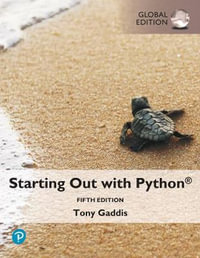| Foreword | p. xi |
| Preface | p. xiii |
| Messaging Basics | p. 1 |
| The Advantages of Messaging | p. 3 |
| Heterogeneous Integration | p. 3 |
| Reduce System Bottlenecks | p. 3 |
| Increase Scalability | p. 4 |
| Increase End User Productivity | p. 4 |
| Architecture Flexibility and Agility | p. 5 |
| Enterprise Messaging | p. 5 |
| Centralized Architectures | p. 7 |
| Decentralized Architectures | p. 7 |
| Hybrid Architectures | p. 8 |
| Centralized Architecture As a Model | p. 8 |
| Messaging Models | p. 9 |
| Point-to-Point | p. 10 |
| Publish-and-Subscribe | p. 10 |
| JMS API | p. 11 |
| Point-to-Point API | p. 13 |
| Publish-and-Subscribe API | p. 14 |
| Real-World Scenarios | p. 14 |
| Service-Oriented Architecture | p. 15 |
| Event-Driven Architecture | p. 16 |
| Heterogeneous Platform Integration | p. 16 |
| Enterprise Application Integration | p. 17 |
| Business-to-Business | p. 17 |
| Geographic Dispersion | p. 18 |
| Information Broadcasting | p. 18 |
| Building Dynamic Systems | p. 18 |
| RPC Versus Asynchronous Messaging | p. 21 |
| Tightly Coupled RPC | p. 21 |
| Enterprise Messaging | p. 23 |
| Developing a Simple Example | p. 25 |
| The Chat Application | p. 25 |
| Getting Started with the Chat Example | p. 28 |
| Examining the Source Code | p. 30 |
| Sessions and Threading | p. 39 |
| Anatomy of a JMS Message | p. 41 |
| Headers | p. 42 |
| Automatically Assigned Headers | p. 43 |
| Developer-Assigned Headers | p. 46 |
| Properties | p. 47 |
| Application-Specific Properties | p. 47 |
| JMS-Defined Properties | p. 49 |
| Provider-Specific Properties | p. 50 |
| Message Types | p. 50 |
| Message | p. 50 |
| TextMessage | p. 51 |
| ObjectMessage | p. 52 |
| BytesMessage | p. 53 |
| StreamMessage | p. 56 |
| MapMessage | p. 58 |
| Read-Only Messages | p. 60 |
| Client-Acknowledged Messages | p. 61 |
| Interoperability and Portability of Messages | p. 61 |
| Point-to-Point Messaging | p. 63 |
| Point-to-Point Overview | p. 63 |
| When to Use Point-to-Point Messaging | p. 66 |
| The QBorrower and QLender Application | p. 67 |
| Configuring and Running the Application | p. 67 |
| The QBorrower Class | p. 69 |
| The QLender Class | p. 76 |
| Message Correlation | p. 81 |
| Dynamic Versus Administered Queues | p. 83 |
| Load Balancing Using Multiple Receivers | p. 84 |
| Examining a Queue | p. 85 |
| Publish-and-Subscribe Messaging | p. 87 |
| Publish-and-Subscribe Overview | p. 87 |
| When to Use Publish-and-Subscribe Messaging | p. 89 |
| The TBorrower and TLender Application | p. 90 |
| Configuring and Running the Application | p. 90 |
| The TLender Class | p. 92 |
| The TBorrower Class | p. 96 |
| Durable Versus Nondurable Subscribers | p. 100 |
| Dynamic Versus Administered Subscribers | p. 101 |
| Unsubscribing Dynamic Durable Subscribers | p. 104 |
| Temporary Topics | p. 104 |
| Message Filtering | p. 107 |
| Message Selectors | p. 109 |
| Identifiers | p. 110 |
| Literals | p. 111 |
| Comparison Operators | p. 111 |
| Arithmetic Operators | p. 113 |
| Declaring a Message Selector | p. 114 |
| Message Selector Examples | p. 116 |
| Managing Claims in an HMO | p. 116 |
| Notification of Certain Bids on Inventory | p. 116 |
| Priority Handling | p. 116 |
| Stock Trade Order Auditing | p. 117 |
| Not Delivered Semantics | p. 117 |
| Design Considerations | p. 118 |
| Guaranteed Messaging and Transactions | p. 125 |
| Guaranteed Messaging | p. 125 |
| Message Autonomy | p. 126 |
| Store-and-Forward Messaging | p. 126 |
| Message Acknowledgments and Failure Conditions | p. 126 |
| Message Acknowledgments | p. 127 |
| AUTO_ACKNOWLEDGE | p. 127 |
| DUPS_OK_ACKNOWLEDGE | p. 132 |
| CLIENT_ACKNOWLEDGE | p. 132 |
| Message Groups and Acknowledgment | p. 133 |
| Handling Redelivery of Messages in an Application | p. 134 |
| Message Groups Example | p. 134 |
| Message Grouping and Multiple Receivers | p. 143 |
| Transacted Messages | p. 145 |
| Creating and Using a JMS Transaction | p. 147 |
| Transacted Session Example | p. 147 |
| Distributed Transactions | p. 150 |
| Lost Connections | p. 151 |
| The ExceptionListener Example | p. 152 |
| Dead Message Queues | p. 153 |
| Java EE and Message-Driven Beans | p. 155 |
| Java EE Overview | p. 155 |
| Enterprise JavaBeans | p. 156 |
| Enterprise JavaBeans 3.0 (EJB3) Overview | p. 157 |
| Simplified Bean Development | p. 158 |
| Dependency Injection | p. 158 |
| Simplified Callback Methods | p. 159 |
| Programmatic Defaults | p. 159 |
| Interceptors | p. 160 |
| Java Persistence API | p. 162 |
| JMS Resources in Java EE | p. 162 |
| The JNDI Environment Naming Context (ENC) | p. 164 |
| Message-Driven Beans | p. 166 |
| Concurrent Processing and Scalability | p. 168 |
| Defining Message-Driven Beans | p. 168 |
| Message-Driven Bean Use Cases | p. 171 |
| Message Facade | p. 171 |
| Transformation and Routing | p. 173 |
| Spring and JMS | p. 177 |
| Spring Messaging Architecture | p. 177 |
| JmsTemplate Overview | p. 180 |
| Send Methods | p. 181 |
| convertAndSend Methods | p. 181 |
| receive and receiveSelected Methods | p. 182 |
| receiveAndConvert Methods | p. 183 |
| Connection Factories and JMS Destinations | p. 184 |
| Using JNDI | p. 184 |
| Using Native Classes | p. 187 |
| Sending Messages | p. 189 |
| Using the send Method | p. 190 |
| Using the convertAndSend Method | p. 191 |
| Using a Nondefault JMS Destination | p. 193 |
| Receiving Messages Synchronously | p. 195 |
| Message-Driven POJOs | p. 198 |
| The Spring Message Listener Container | p. 198 |
| MDP Option 1: Using the MessageListener Interface | p. 199 |
| MDP Option 2: Using the SessionAwareMessageListener Interface | p. 201 |
| MDP Option 3: Using the MessageListenerAdapter | p. 202 |
| Message Conversion Limitations | p. 207 |
| The Spring JMS Namespace | p. 208 |
| Element Properties | p. 209 |
| Element Properties | p. 211 |
| Deployment Considerations | p. 213 |
| Performance, Scalability, and Reliability | p. 213 |
| Determining Message Throughput Requirements | p. 213 |
| Testing the Real-World Scenario | p. 214 |
| To Multicast or Not to Multicast | p. 217 |
| TCP/IP | p. 218 |
| UDP | p. 218 |
| IP Multicast | p. 218 |
| Messaging Over IP Multicast | p. 219 |
| The Bottom Line | p. 221 |
| Security | p. 222 |
| Authentication | p. 222 |
| Authorization | p. 223 |
| Secure Communication | p. 224 |
| Firewalls and HTTP Tunneling | p. 224 |
| Connecting to the Outside World | p. 225 |
| Bridging to Other Messaging Systems | p. 227 |
| Messaging Design Considerations | p. 229 |
| Internal Versus External Destination | p. 229 |
| Internal Destination Topology | p. 230 |
| External Destination Topology | p. 231 |
| Request/Reply Messaging Design | p. 232 |
| Messaging Design Anti-Patterns | p. 236 |
| Single-Purpose Queue | p. 236 |
| Message Priority Overuse | p. 240 |
| Message Header Misuse | p. 240 |
| The Java Message Service API | p. 245 |
| Message Headers | p. 265 |
| Message Properties | p. 277 |
| Installing and Configuring ActiveMQ | p. 285 |
| Index | p. 291 |
| Table of Contents provided by Ingram. All Rights Reserved. |



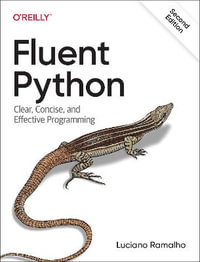

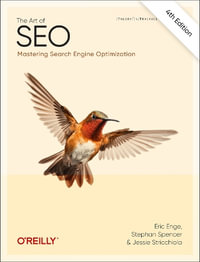

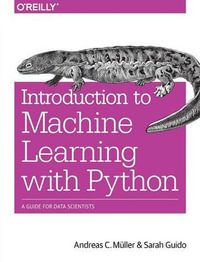
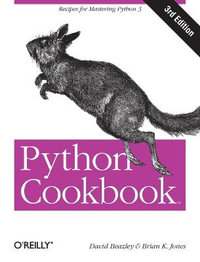









![Introduction to Java Programming and Data Structures, Comprehensive Version [Global Edition] : 12th Edition - Y. Liang](https://www.booktopia.com.au/covers/200/9781292402079/3378/introduction-to-java-programming-and-data-structures-comprehensive-version-global-edition-.jpg)
